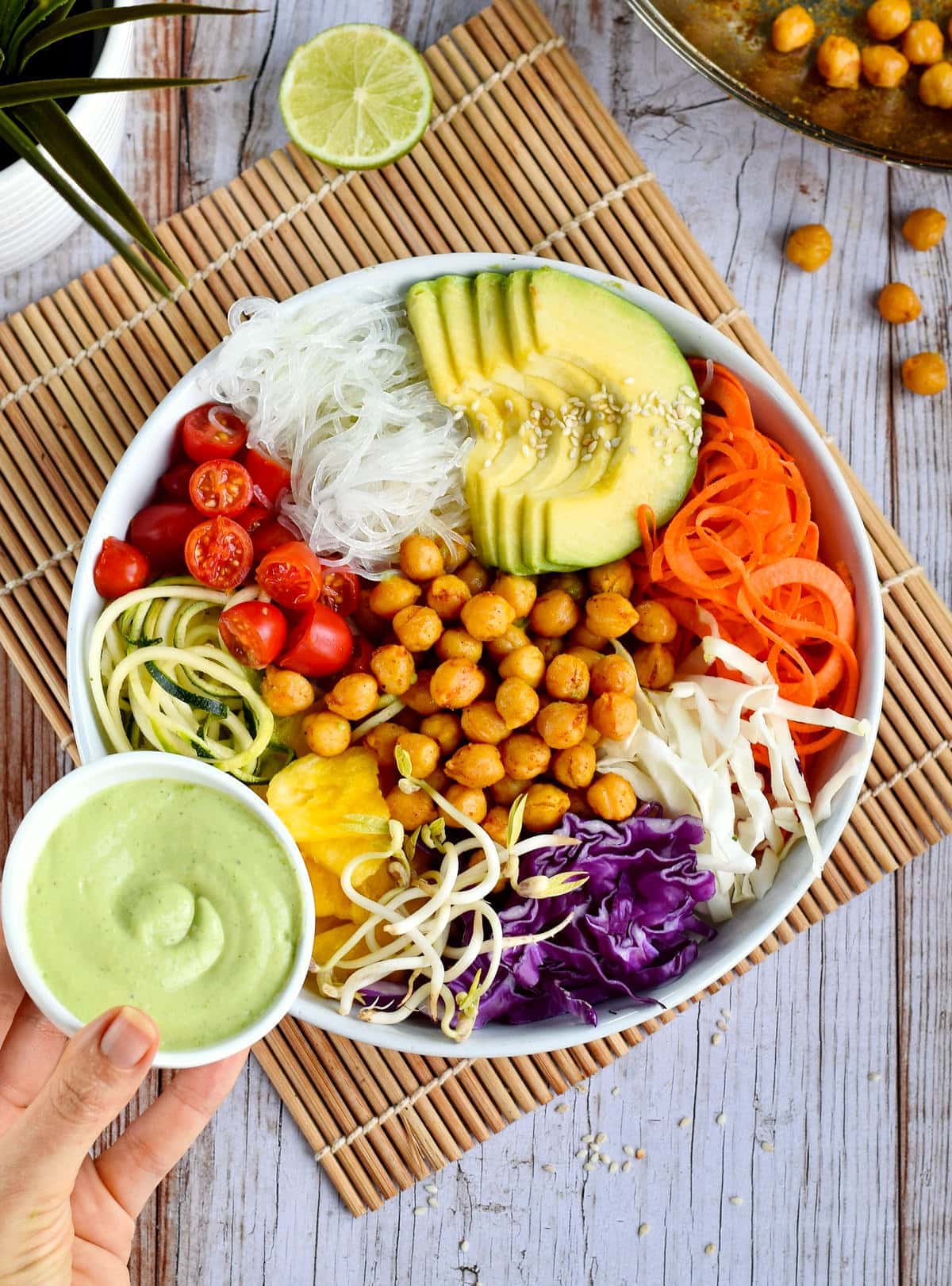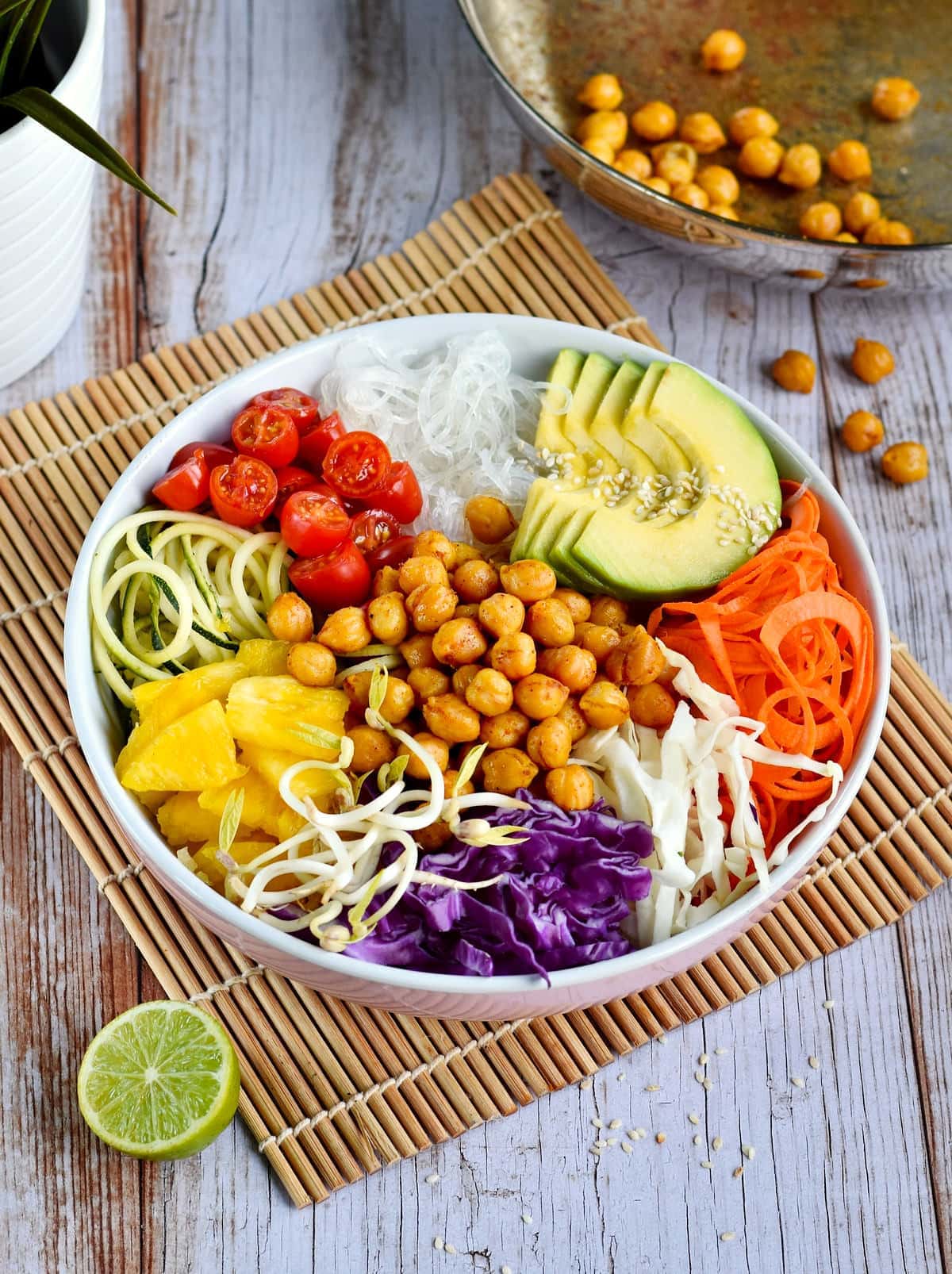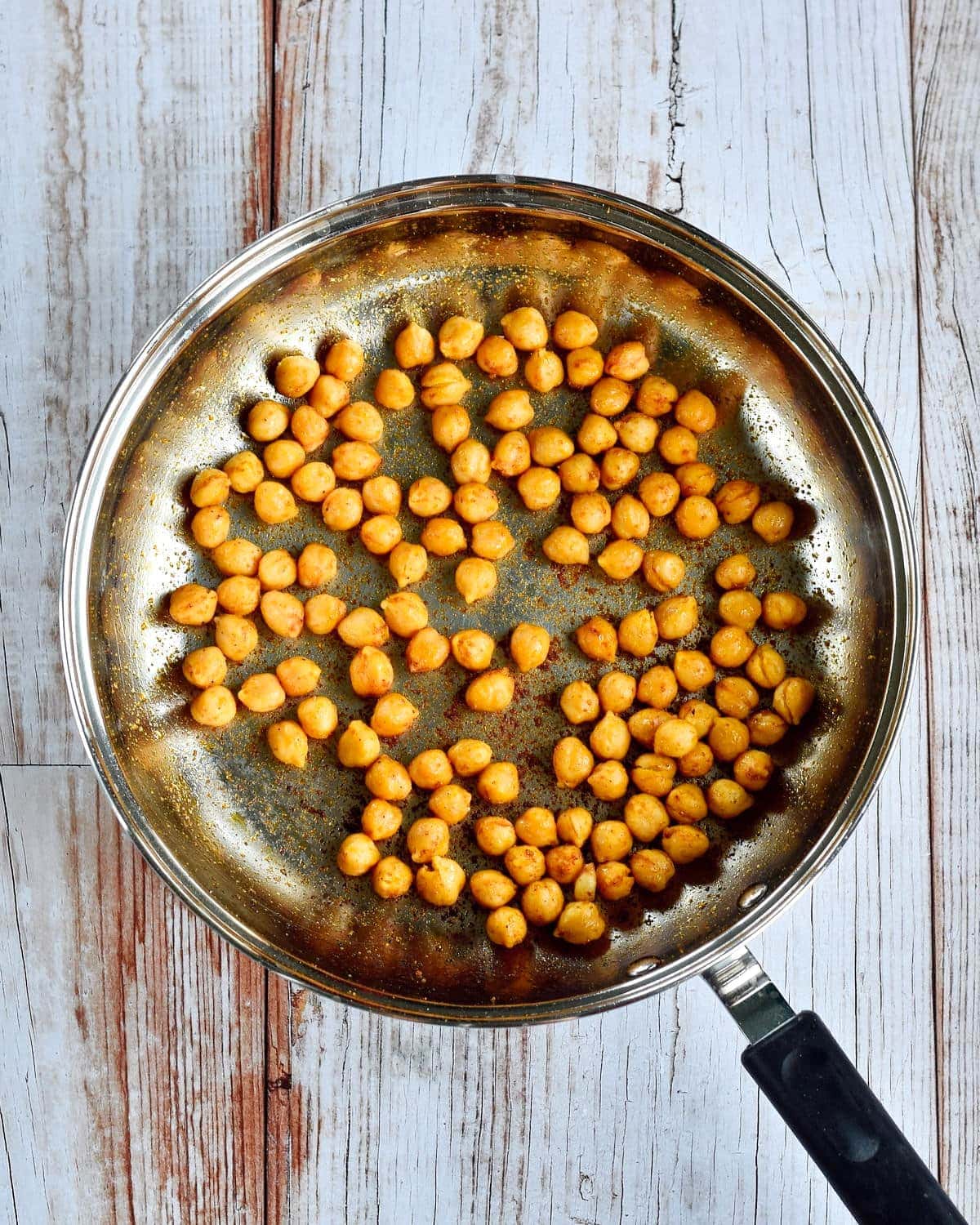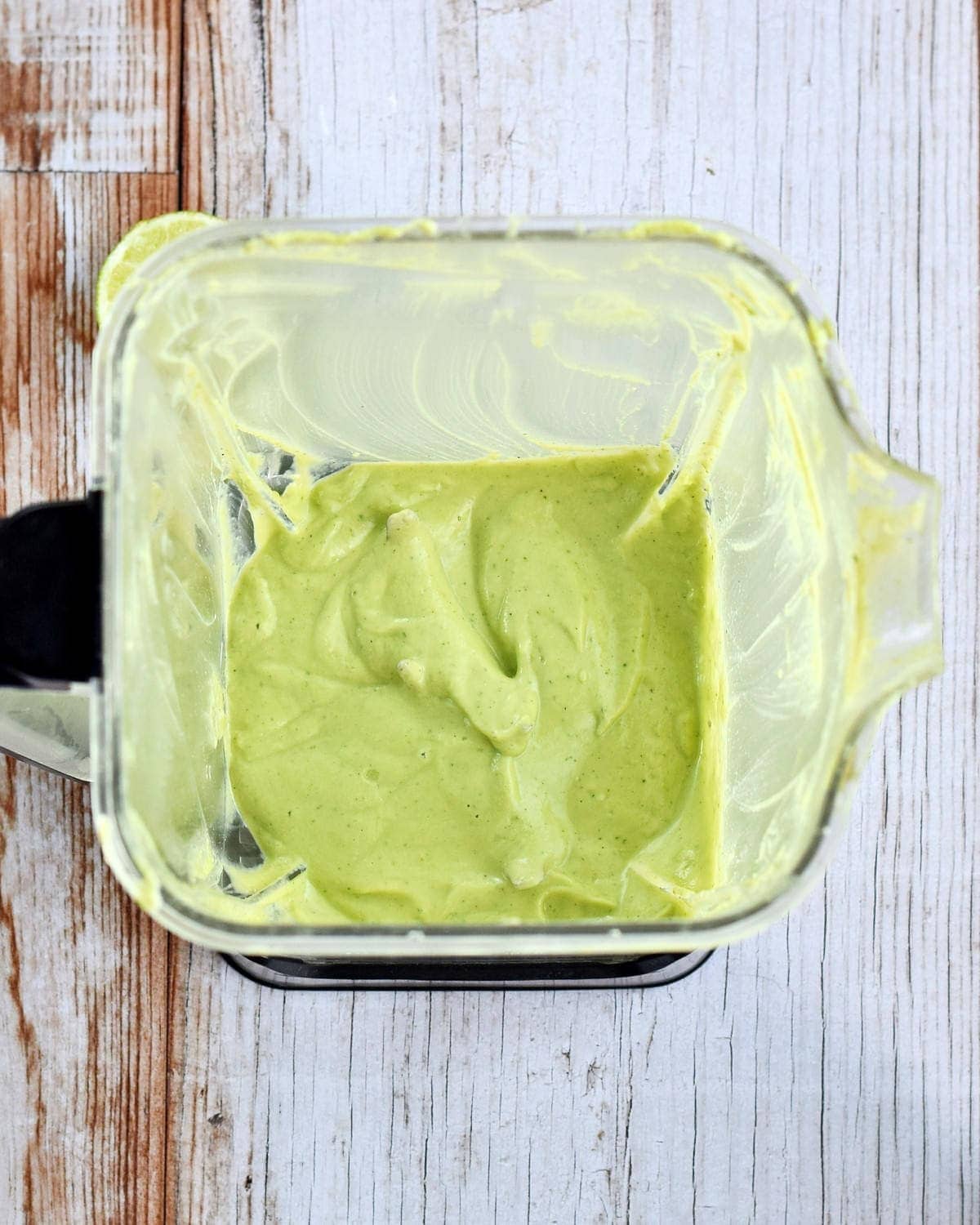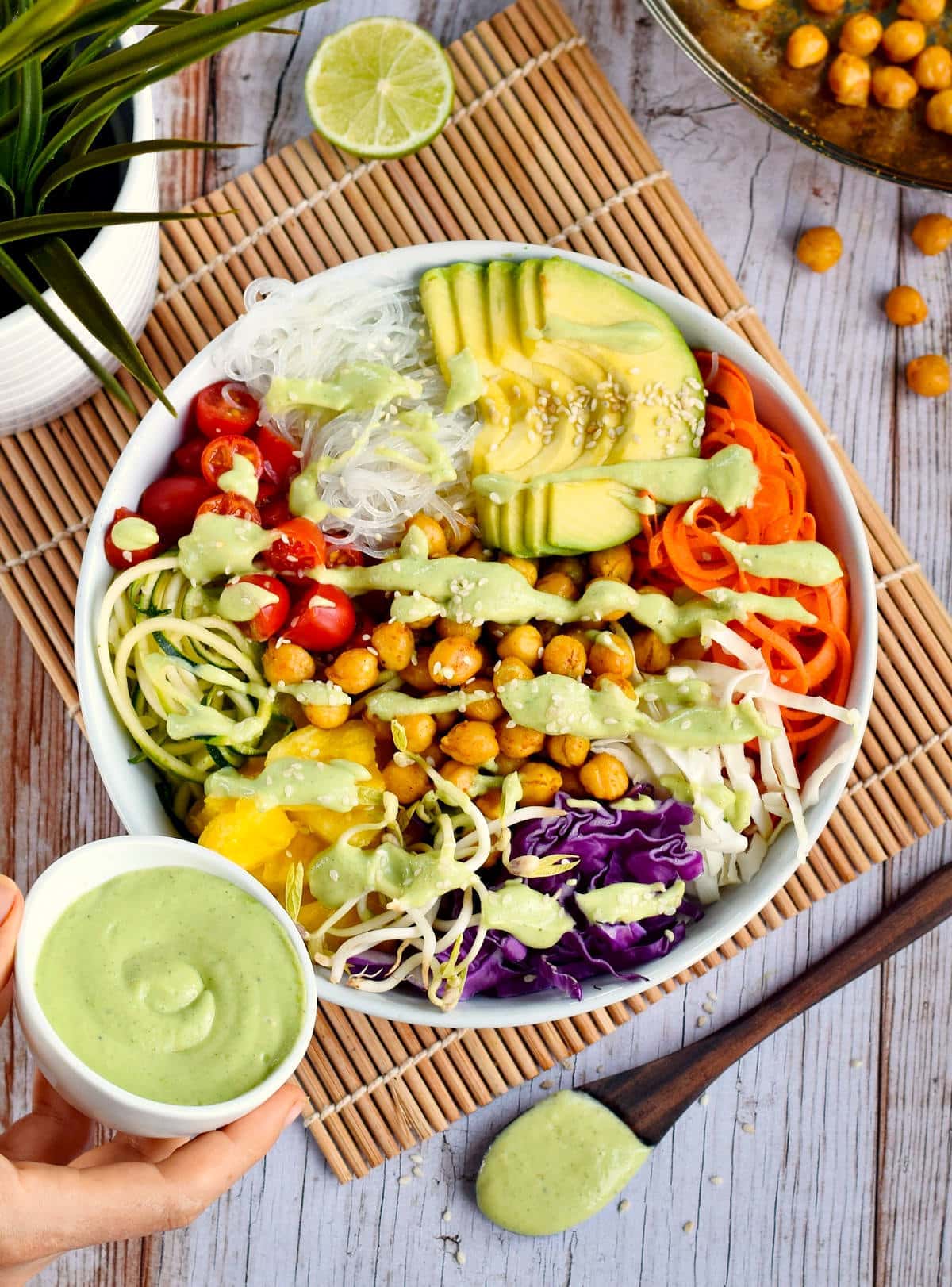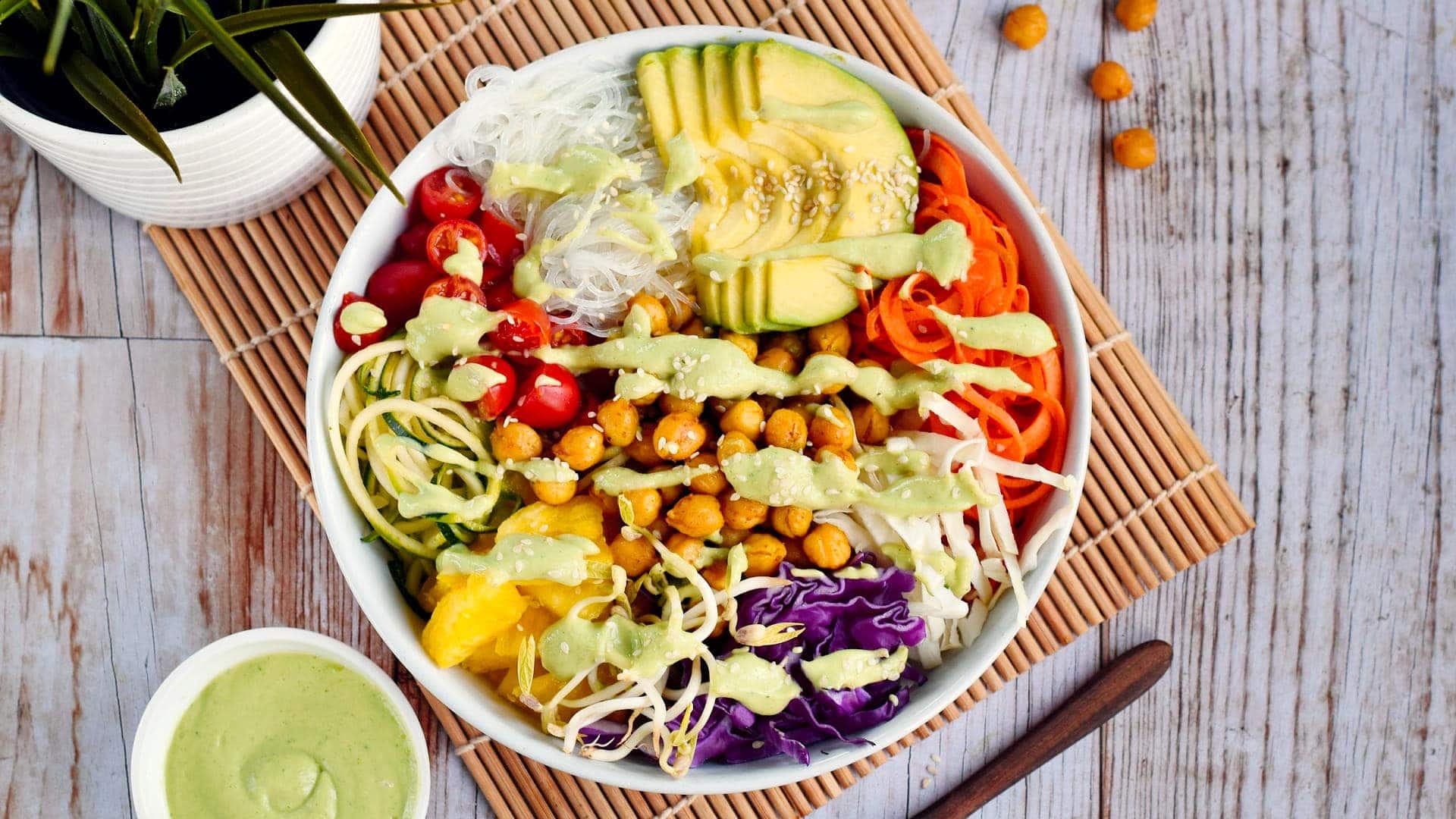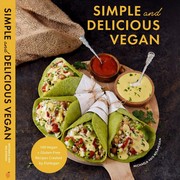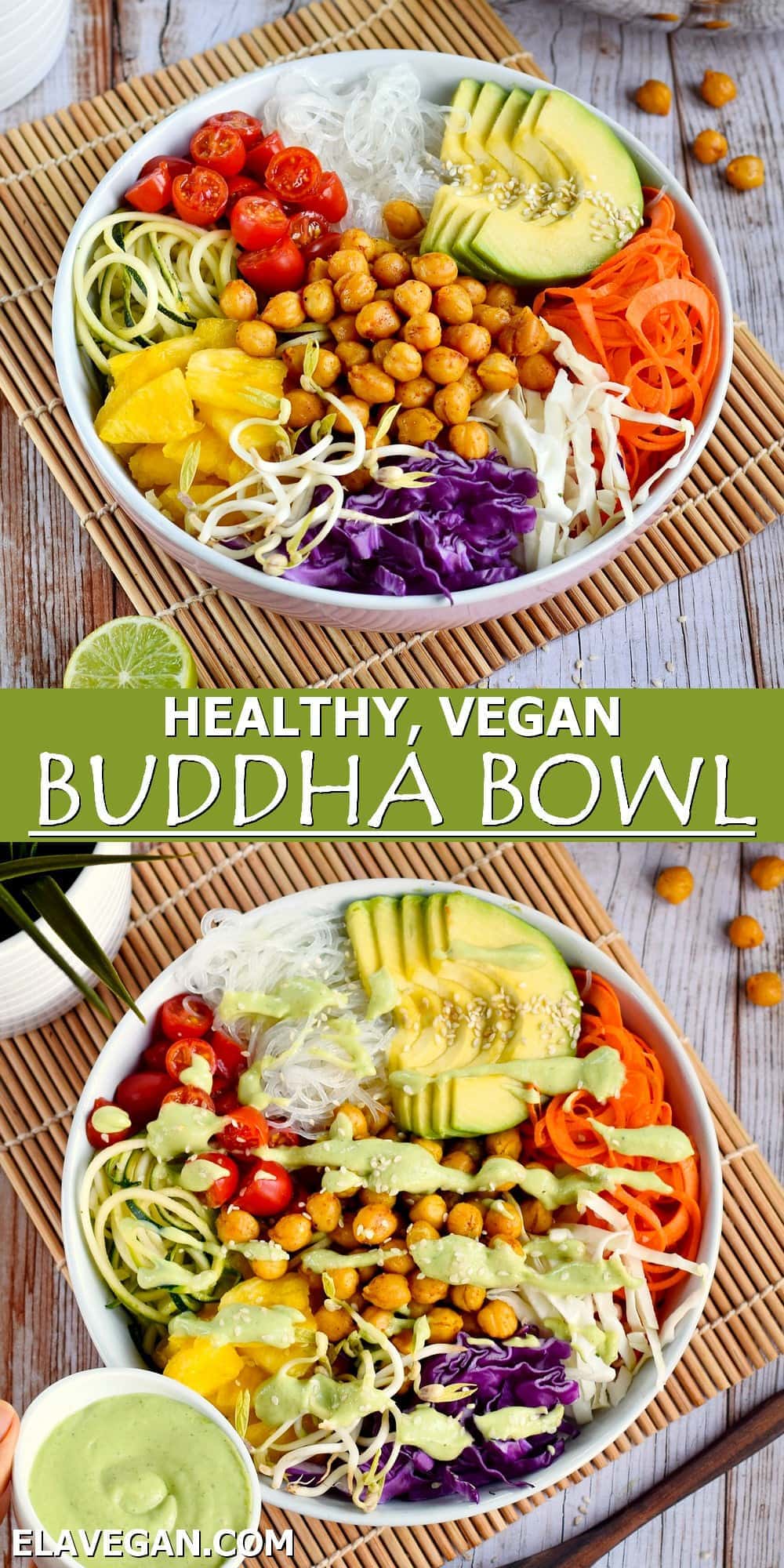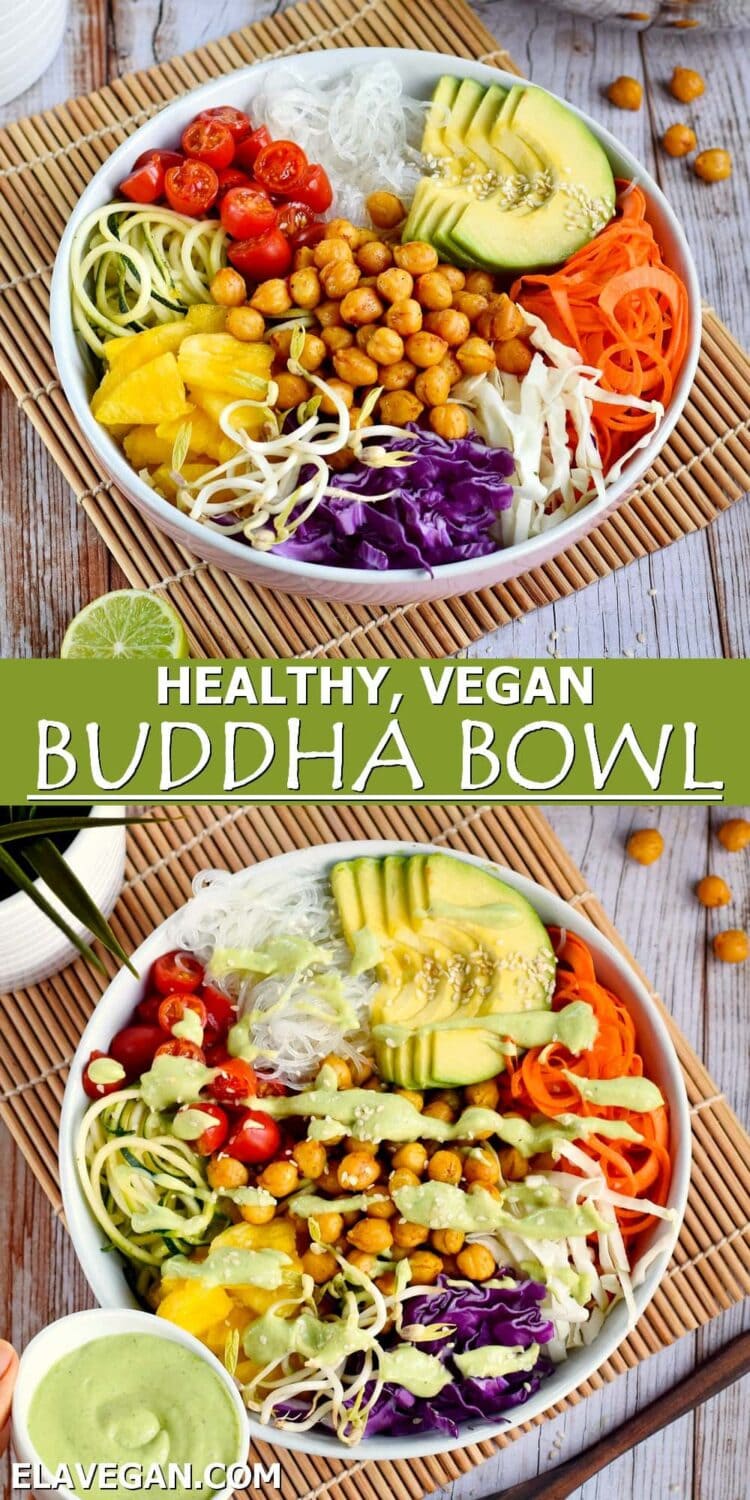What Is A Buddha Bowl?
Buddha bowls and any mixed vegan salad bowls – like this Mexican Avocado Salad and Vegan Lunch Bowl are an obsession of mine. Not only do they allow you to have a little bit of lots of things, but they’re also super nutrient-dense and versatile. In fact, Buddha bowls usually comprise a fun mixture of leafy greens, healthy fats, protein, and carbs. The result is a nourishing bowl packed with vitamins, minerals, antioxidants, and fiber – to keep you satisfied for hours. According to Urban Dictionary, they’re named that way because they’re “a bowl which is packed so full that it has a rounded ‘belly’ appearance on the top much like the belly of a Buddha.“. Others speculate it may be because of the way that Buddhist monks eat small portions of various foods- either way, sounds good to me! For this vegan Buddha bowl, I’ve ditched any meats and dairy in favor of crispy chickpeas as my chosen protein. I’ve paired this with the healthy fats in avocado, some of my favorite raw veggies for fiber, gluten-free noodles, and a creamy avocado lime sauce (I mean, can you ever really have too much avocado?!). This chickpea Buddha bowl is easy to prepare and, just like stir-fries, is a meal that is just begging for you to use up your pantry and fridge leftovers. Serve this at the end of a week, using up whatever you have to hand or meal-prep several ingredients at the beginning of the week and mix and match throughout, for healthy meals you’ll never grow bored with!
The Ingredients
Assembling this vegan bowl is as simple as mixing and matching ingredients from different categories to make a one-dish meal piled high with a combination of healthy ingredients. Let’s look at the ingredients and possible alternatives for this vegan Buddha bowl.
Noodles: I used cellophane noodles/ rice noodles. However, you can swap this out with your favorite complex carbs (see below). Vegetables: I used a combination of carrot, zucchini (often cucumber), tomato, cabbage, and avocado. Chickpeas: I lightly fried my chickpeas with some coconut oil, curry powder, and salt & pepper. You could also use these crispy air-fried chickpeas. Fruit: Pineapple – feel free to omit this if you’re not a sweet and savory lover. Avocado Lime Dressing: Avocado, cucumber, garlic, lime juice, tahini, plant-based milk, salt & pepper. You can experiment with extra herbs, such as ground cumin, onion powder, ginger, cilantro, etc. Feel free to swap out with another favorite dressing of your choice- like this tahini dressing, etc.
For the full ingredients list, measurements, complete recipe method, and nutritional information, read the recipe card below.
Possible Vegan Bowl Add-Ins & Adaptations
Leafy Greens: Lettuce, spinach, kale, Swiss chard, salad greens, watercress, etc. Protein: Use falafel instead of the chickpeas, or pair them with some baked tofu and/or quinoa. Complex Carbs: Brown rice (or red, black, wild rice), barley, corn, sweet potato, millet, etc. However – you could also use other bases, including noodles or leftover cooked grain dishes like this Quinoa Pilaf, Djuvec Rice, or Hibachi-Style Japanese Fried Rice. For a lower-carb option, use cauliflower rice. Vegetables: Broccoli, mange tout/sugar snap, cucumber, beetroot, edamame, peppers, broccoli/cauliflower, mushroom, celery, sprouts, etc. Fruit: Blueberries, strawberries, raspberries, mango, apple, goji berries, etc. Healthy fats: Nuts, seeds, chia seeds, olive oil, etc. Other add-ins: Fresh herbs (mint, cilantro, chives, green onion, etc.), red pepper flakes, black pepper, etc. The Buddha bowl sauce: Feel free to use any of your favorite sauces that match the ingredients. Like this Yum Yum Sauce.
How To Make A Buddha Bowl
Step 1: Prepare the noodles
Do this according to the package instructions (or use another grain of your choice).
Step 2: Prepare the vegetables
Quickly fry the chickpeas in a little oil with curry powder, salt & pepper until crispy. Alternatively, you could use these crispy air-fried chickpeas (oven method included too).
Meanwhile, chop the vegetables/fruit. I like to prepare them differently for a change in texture. I chopped the avocado and pineapple, shredded the cabbage, and spiralized the carrot and zucchini. Furthermore, I sometimes also make a tomato rose on top with finely sliced tomato (see photo below). Feel free to prepare yours however you prefer.
Step 3: Prepare the dressing & assemble
Blend the dressing ingredients together in a high-speed blender/ food processor. Then, assemble the vegan Buddha bowl ingredients in a wide bowl, and drizzle with the avocado sauce. Feel free to garnish with fresh herbs or some sesame seeds/cumin seeds.
Can You Meal-Prep Buddha Bowls?
Yes, of course. Most of the chickpea Buddha bowl elements can be prepared in advance and stored in airtight containers in the fridge for several days. You can also create the assembled Buddha bowl meal in tubs – just leave out the dressing (and avocado) until right before serving.
Are there correct Vegan Buddha bowl ratios?
Some sources may suggest that each type of ingredient should be in a specific ratio. i.e.
Veggies = 20% Grains = 20% Proteins = 20% Healthy fats = 15% Leafy greens = 10% Fruits = 10% Toppings = 5%
While this can be handy when compiling bowls for the first time, there is no right or wrong with this. Do what feels best and enjoy a delicious vegan bowl of nutrition! Top Tip: When choosing the fruits and veggies for your vegan bowl, I go by the rule that the more color, the more nutrients, vitamins, and minerals – so get creative! Eat the rainbow!
Other Vegan Salad Recipes:
Brown Rice Salad Keto Coleslaw German Cucumber Salad Vegan Potato Salad Easy Vegan Pasta Salad
If you try this vegan chickpea Buddha bowl, I’d love a comment and ★★★★★ recipe rating below. Please don’t forget to tag me in re-creations on Instagram Or Facebook with @elavegan #elavegan – I love seeing your recreations.

